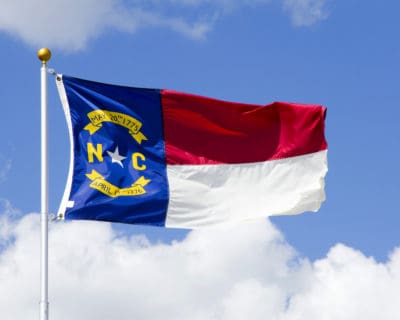
For many decades, as North Carolina’s old farm and factory economy eroded, public education advocates have turned to economic necessity as their principal go-to argument for initiatives to improve schools and elevate student achievement. The myFutureNC collaboration of education, business, and government embodies this rationale with its analysis of the pipeline from ninth grade onward and its attainment goals explained as “critical to building the state’s infrastructure of opportunity … and maintaining North Carolina’s economic growth.”
Another rationale, rooted deeper in American history, holds that an educated citizenry is essential to democracy. In his Farewell Address of 1796, George Washington promoted “institutions for the general diffusion of knowledge’’ and asserted that “it is essential that public opinion should be enlightened.”
In addition to the economic imperative and the democracy imperative, there is a third rationale for bolstering public education. Schools serve as instruments to fight poverty.
It’s not fashionable in today’s political environment to define an initiative as anti-poverty. Both Democrats and Republicans compete to appeal to the broad middle class, and they are politically pragmatic to do so.
The concept of a “war on poverty’’ that originated in the Johnson administration of the mid-1960s remains contentious today. Advocates of direct poverty-fighting argue that the nation failed to wage the “war’’ aggressively enough. Its critics decry expansion of the role of government, resulting in too much dependency on a “welfare state.”
Key elements of Johnson’s “Great Society’’ live on today: Head Start, food stamps now called SNAP, and Title I funding for public schools in low-income communities. The federal school lunch program pre-dates the Johnson initiatives by two decades, having begun under President Truman in 1946.
In North Carolina’s budget for K-12 schools, federal funding contributes about 11% of the total — mostly targeted toward students with disabilities and from low-income households. The state has its own funding streams that flow toward such students: supplemental assistance for economically disadvantaged students and for 68 low-wealth counties and 27 small counties.
Much of the great education debate over this election year and beyond will center on how much effort to make to address the educational, social-support, and nutrition needs of poor and near-poor students. The Trump administration proposes to consolidate Title I assistance to high-poverty schools and 28 other programs into a block grant to the states, cutting federal education spending by 7.8%. Judge David Lee’s recent Leandro decision contains a section on “low-performing and high-poverty schools,’’ and orders “an assistance and turnaround function’’ for schools and districts.
Today, roughly six out of 10 North Carolina school students — more than 840,000 — qualify for free or reduced-priced lunch, a data point used regularly as a proxy for counting students who are poor or near-poor.
Judge Lee’s decision drew from his consultants’ findings that “807 (33%) of the state’s traditional public schools and 36 (21%) of the state’s charter schools qualified as high-poverty schools, with 389,204 (26%) of traditional public school students and 15,301 (17%) of charter school students attending these schools” in 2017.
The facts on the ground pose challenges to North Carolina. Research shows that schools with a balanced enrollment of middle-class and lower-income students raise achievement levels of the poorer students without blunting the education of more affluent students. High-poverty schools often require higher funding to boost education attainment.
Of course, traditional public schools are not alone in education-for-poverty-alleviation. The KIPP network of publicly funded charter schools and the Cristo Rey network of Catholic high schools focus on uplift for young people in distressed communities. And yet, neither charter schools nor parochial schools have the capacity of the broad public systems across this state and nation.
There is no inherent contradiction among the three rationales for public support for stronger public education. Just as North Carolina needs to strengthen its educational systems to promote economic and democratic vitality, so its public schools fit into the matrix of public and private institutions necessary to cracking the inter-generational transmission of poverty.


